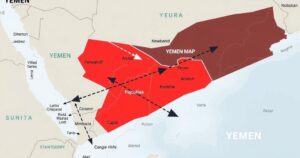Rwanda-Backed M23 Rebels Capture Goma, Escalating Eastern Congo Crisis

M23 rebels, supported by Rwanda, have seized control of Goma and surrounding mining sites in eastern DRC, escalating a long-standing crisis. This incursion threatens regional stability and has led to the displacement of millions. Three potential scenarios may unfold, from protracted conflict to diplomatic resolutions, raising critical concerns regarding the DRC’s governance and security.
The M23 rebel group, backed by Rwanda, has captured Goma, the capital of East Kivu, along with significant mining territories in North and South Kivu. Following the retreat of Congolese forces and allied militiamen, M23 has established full control over Goma, intensifying a decades-long crisis that threatens further instability in the Democratic Republic of Congo (DRC) and might exacerbate regional conflicts. Despite an ostensibly brief humanitarian ceasefire, M23 continues its offensive toward Bukavu in South Kivu, heightening tensions.
The M23 rebels are reportedly armed and supported by Rwandan forces, which have entered the DRC to aid the insurgents. This military intervention appears driven by Rwanda’s desire for Congolese mineral resources, amid escalating diplomatic and economic tensions between Kinshasa and Kigali. Formed in 2012 from defected Congolese Tutsi officers, M23’s resurgence in 2021 significantly complicated the DRC’s security landscape, triggering international concern and manipulation of military strategies.
Historical context reveals that M23 is the latest manifestation of a series of Tutsi-led rebellions dating back to the mid-1990s. Following a failed diplomatic effort led by Angola and supported by the USA, M23’s actions reflect a broader struggle between the DRC and Rwanda over control and influence. The limited international response, particularly from the UN, has allowed the rebels to advance with greater impunity as foreign intervention diminishes.
Three possible scenarios may follow these developments: M23 may retain control of Goma and expand its territorial gains, sustaining wider conflict in the region; alternatively, M23 could withdraw but keep key mining areas resulting in ongoing localized violence; lastly, a negotiated peace could emerge under international pressure, stabilizing the region but proving less likely in the current context. Each scenario carries implications for regional security and the stability of Kinshasa’s government.
The Congolese government has faced significant backlash due to its inability to defend its territory, manifesting in attacks on foreign embassies perceived as supportive of Rwanda. The strategic loss of Goma further complicates the political landscape, raising questions about President Tshisekedi’s leadership. Credendo currently categorizes the DRC with short-term political risk of 6/7 and ongoing medium- to long-term risks at 7/7 due to these mounting tensions and territorial disputes.
The situation in the Democratic Republic of Congo has heightened concerns following the territorial gains of the M23 rebel group, significantly backed by Rwanda. Long-standing historical tensions, coupled with the DRC’s struggles to maintain control in the eastern provinces, have led to adverse humanitarian impacts, notably displacing millions. The dynamics between Rwanda and the DRC center around resource control and regional stability, implicating international interests and influences in the ongoing conflict.
The takeover of Goma by M23 exacerbates the already precarious security climate in the DRC, leading to potential wider regional conflicts. With conflicting interests at play and the possibility of various scenarios unfolding, including further territorial advancements or a push for negotiation, the situation demands careful international observation and response. Consequently, the Congolese government’s credibility is at stake amidst rising domestic discontent and challenges to territorial sovereignty.
Original Source: credendo.com








